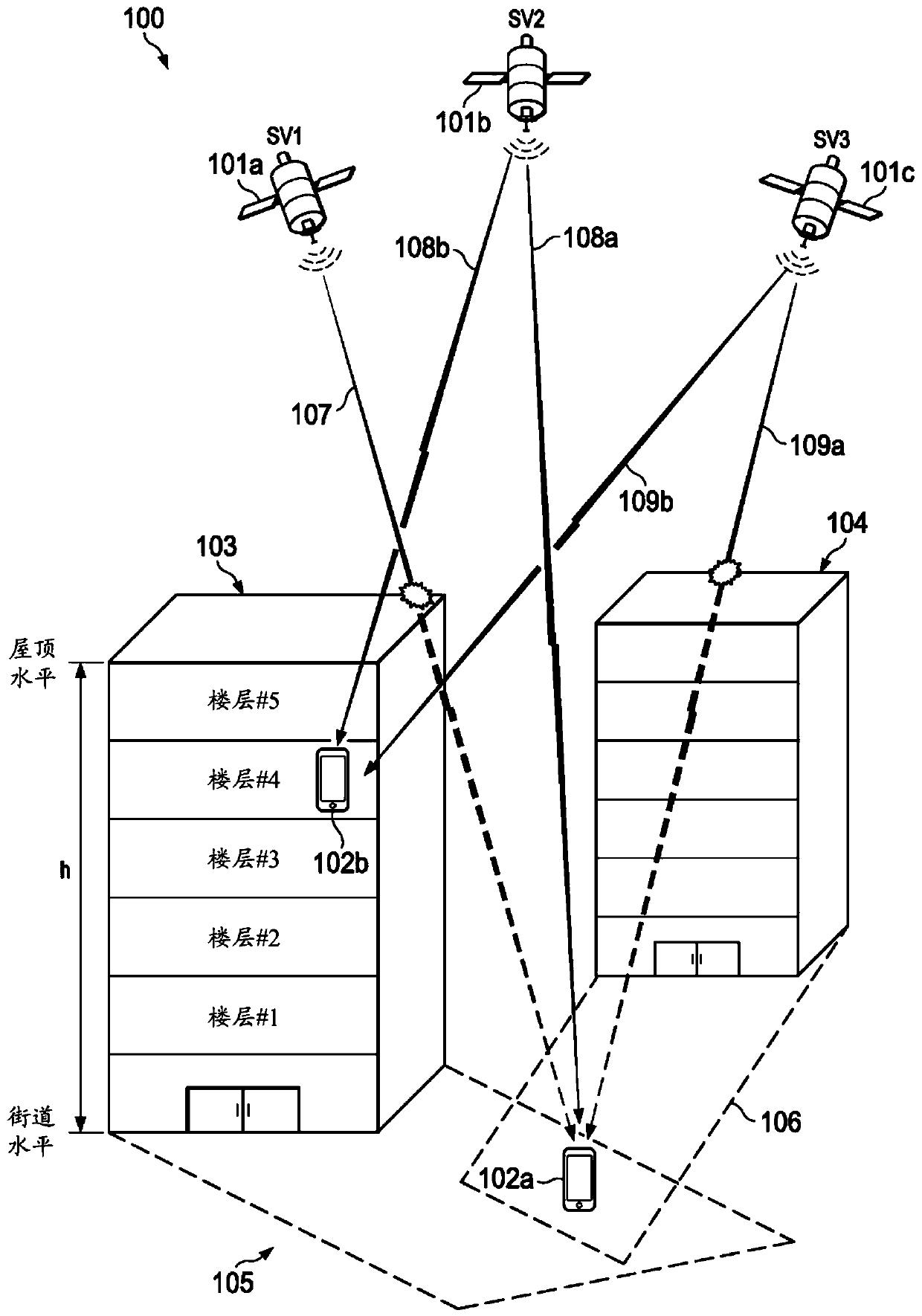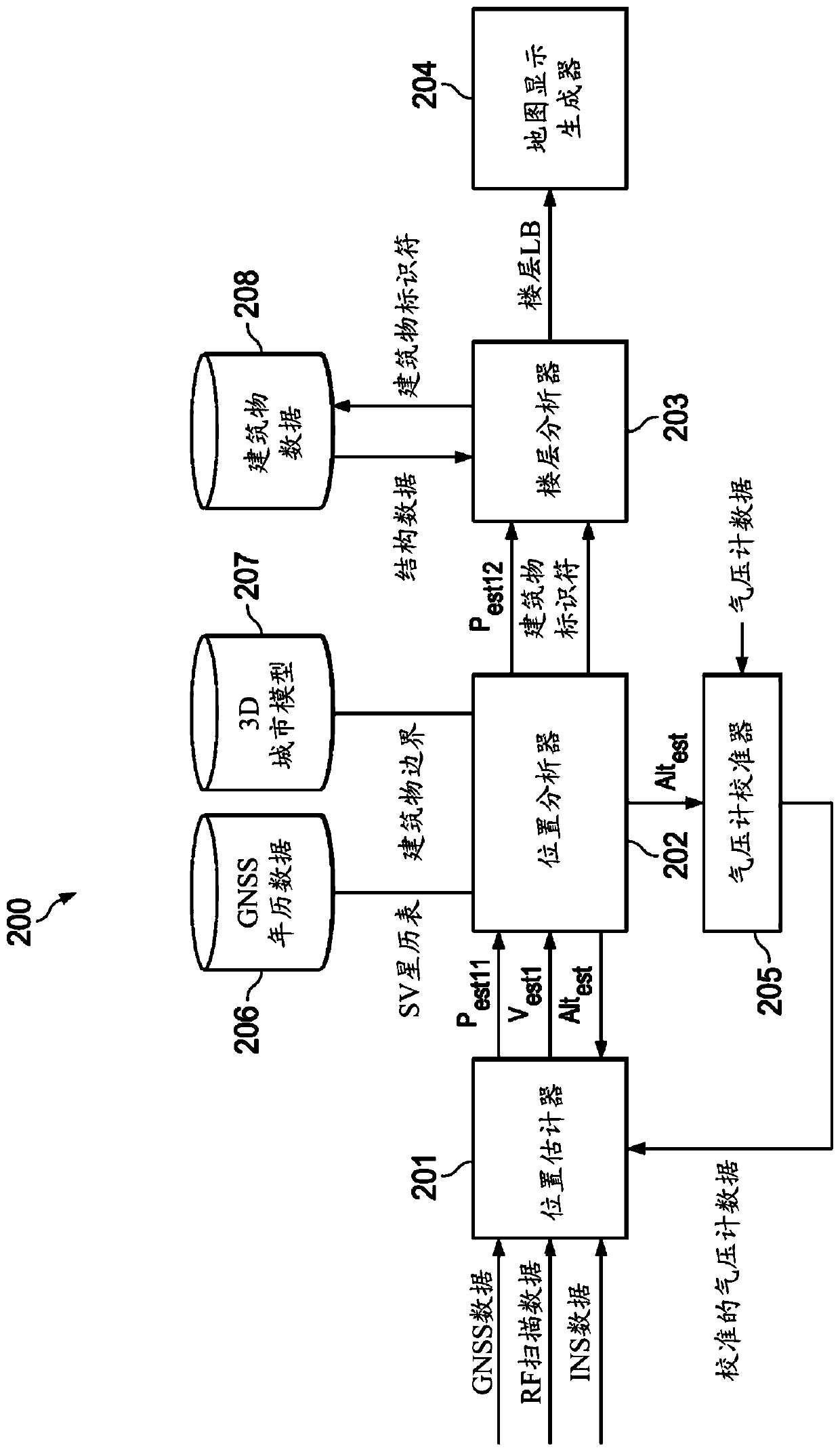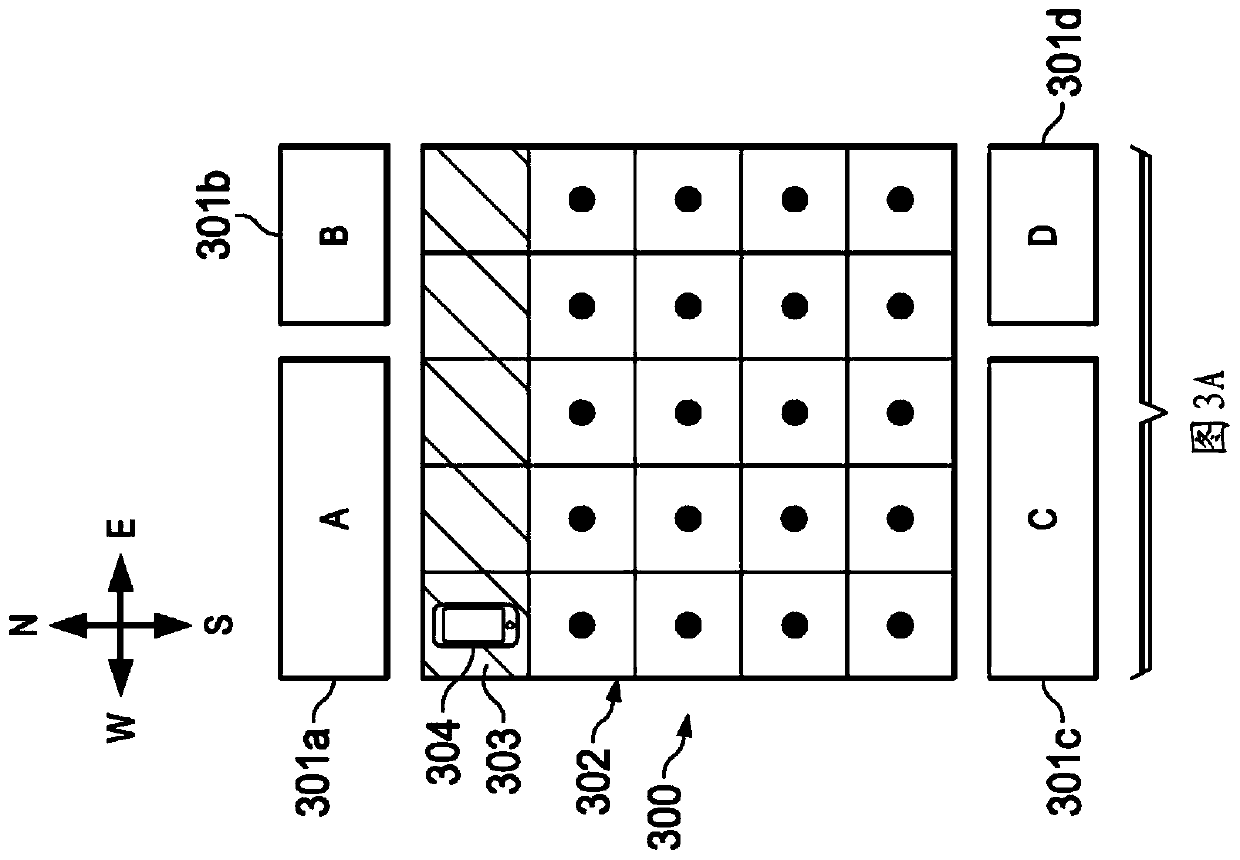Three-dimensional city models and shadow mapping to improve altitude fixes in urban environments
A high-level, indoor environment technology, applied in satellite radio beacon positioning systems, instruments, measuring devices, etc., can solve problems such as aggravation, poor performance, mobile device location accuracy and solution usability, and achieve the goal of improving high-level positioning Effect
- Summary
- Abstract
- Description
- Claims
- Application Information
AI Technical Summary
Problems solved by technology
Method used
Image
Examples
example 3D
[0035] Example 3D Candidate Position Grid (CPG)
[0036] Once the 2D CPG is generated, vertically extend all or part of the 2D CPG to create a multi-layered 3D CPG, such as Figure 3B shown. The vertical spacing between layers in a 3D CPG may or may not be equidistant, and may be the same as or different from the horizontal spacing (eg, 2-3 meters). In an embodiment, the number of floors and the vertical spacing between floors may be based on the tallest building in the area. The coverage area of the 3D CPG may vary based on an assessment of the quality of the received GNSS signal. For example, to reduce computation, it is not necessary to extend all candidate positions in the 2D CPG in the vertical direction. Instead, certain candidate locations may be selected for vertical extension based on satellite geometry and their proximity to the candidate indoor environment.
[0037] Figure 3A is a top plan view of an example 2D CPG according to an embodiment. In the examp...
PUM
 Login to View More
Login to View More Abstract
Description
Claims
Application Information
 Login to View More
Login to View More - R&D
- Intellectual Property
- Life Sciences
- Materials
- Tech Scout
- Unparalleled Data Quality
- Higher Quality Content
- 60% Fewer Hallucinations
Browse by: Latest US Patents, China's latest patents, Technical Efficacy Thesaurus, Application Domain, Technology Topic, Popular Technical Reports.
© 2025 PatSnap. All rights reserved.Legal|Privacy policy|Modern Slavery Act Transparency Statement|Sitemap|About US| Contact US: help@patsnap.com



